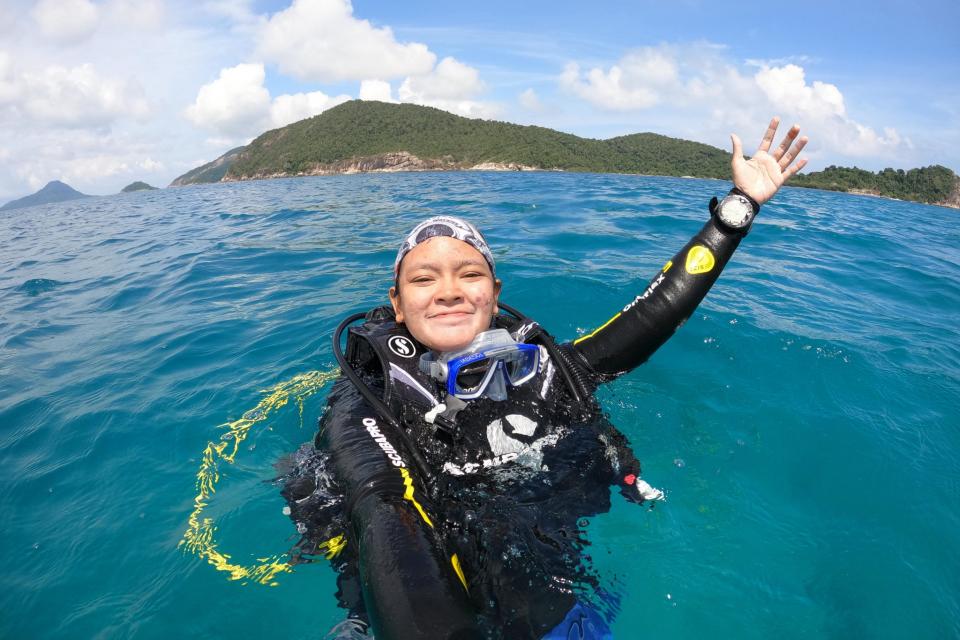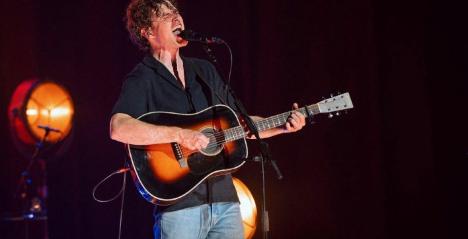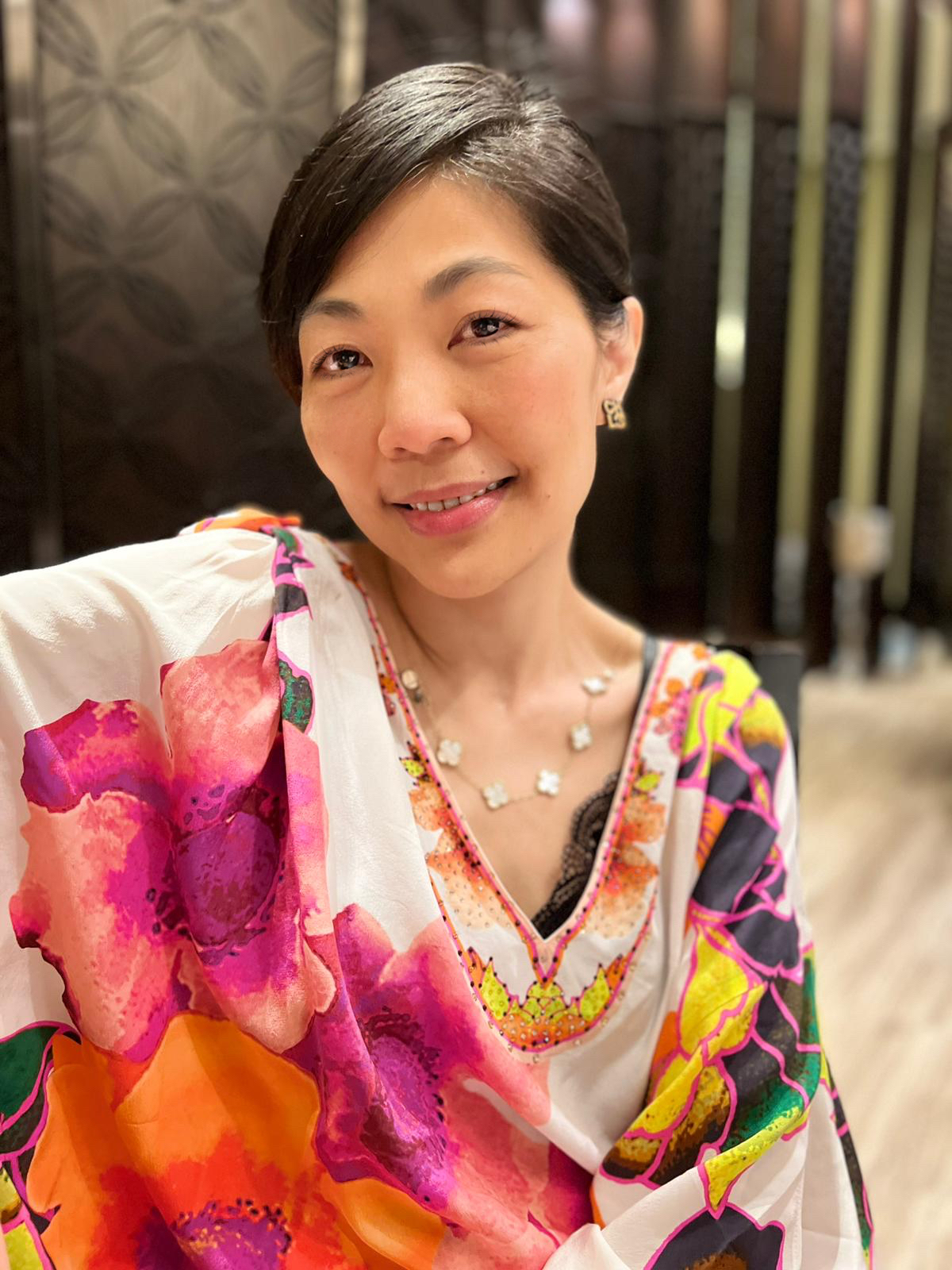This December marks my one-year anniversary since working in Kiabu Village as Marine Conservation Program Assistant for the Foundation. This past year of living on a remote island has taught me a lot, not just about marine conservation but also working alongside local island communities.
No doubt the biggest challenge so far in doing conservation work in the Anambas that I and the marine conservation team have to deal with is extreme weather and sea conditions. The geographical location of the Anambas Islands that is directly adjacent to the Natuna means that Anambas only has two months in a year, from April to May, of completely calm ocean conditions. This period of time is called the eastern wind season. During this time the Kiabu seas are so tranquil and crystal clear that it’s very easy for us to see the bottom of the ocean
The end of the year is when the weather is at its most extreme, also known as the northern wind season, it begins in December and lasts until the end of February next year. This is the time when it’s almost impossible for us to do any fieldwork because of the strong winds and high waves that can endanger our safety in the sea.
During these months we tend to stay in our basecamp in Kiabu Village, making program plans for the next year, meeting with local communities so we can create better plans for the village, and in our free time we do trekking on the hills around Airabu Island (the name of the island where Kiabu is located).

Three years before working at the Foundation I did an internship at the Komodo National Park in East Nusa Tenggara where I was tasked to inform local and foreign tourists on manta ray conservation and the code of conduct of diving with the manta rays.
Here’s something that I find interesting about the marine ecosystems at the Komodo National Park and Marine Recreational Park of Anambas Islands (TWP Anambas): both locations have a high diversity of hard coral species. According to data from Marine Rapid Assessment (MRAP) done by MPAG USAID [1], the diversity level of hard coral species in Anambas is indeed similar to that of Komodo. These two locations are more diverse than Banda Island in Maluku, but lower than Derawan Islands in East Kalimantan, Bunaken in North Sulawesi and Raja Ampat in West Papua.
Apart from expanding my knowledge about marine conservation in Indonesia, the internship experience has helped me with my job now at the Foundation where one of my main responsibilities is to educate the local communities on marine conservation.
What I’ve learned so far from doing community outreach in two different locations in Indonesia is it’s a lot easier to educate the communities and tourists at Komodo National Park because the place is a popular tourist destination. The people there understand the value of preserving marine ecosystems because their economy depends on it.
Meanwhile in Anambas Islands, even though the regional government has proclaimed the TWP Anambas as one of the main marine tourist attractions in the region and actively promoting it, currently the regency is not yet a popular destination among the local and foreign travellers, thus the local communities here still can’t understand the economic benefits of conserving the marine biodiversity of the Anambas.
My fellow marine conservation team member Novita Permata Putri also shares the same point of view. Novita, who is one of the Junior Marine Biologists here, previously worked on the Rote Island in East Nusa Tenggara where she did research on sharks and rays; she says that when the regional economy improves due to marine tourism, the local communities are more eager to take part in protecting the oceans.
Local traditions and customs are still vibrant and resilient in the Anambas, including practices that endanger the environment and wildlife. Although it’s not so common now, there are still people who consume and trade turtle eggs. It is a tradition that has been done since ancient times here even though turtles and their eggs are now protected in Indonesia and there’s a law that prohibits all turtle species to be traded.

As someone who is staying in this tight-knit island community as a “guest”, I am of course wary of preaching about ending harmful practices in Kiabu. So, as a way for me, and the team, to gain a better understanding of this issue, we had a meeting with the Technical Implementation Unit (UPT) of LKKPN Pekanbaru and the Village Head. From our discussions, I can conclude that there’s a lack of education about turtles in this village, and the majority of people here are not aware of the legal consequences of consuming and trading this protected animal.
Living in this remote area where Internet connection and electricity are very limited requires me, and the rest of the team, to think creatively in solving conservation problems here. One idea that we came up with as a way to address the lack of conservation education in Kiabu is a new activity called KELAUT for schoolchildren.
Sometimes ideas also come from the local communities. One time we were thinking of setting up a fishing zone near Kiabu that would be far away from the core zone of TWP, however, the fishermen proposed a better idea to us: instead of creating a specialized area for fishing, we should make Fish Aggregating Devices (FADs) to attract more fish to Kiabu. We liked their idea better and we even received a grant from Seastainable Co. to execute the plan!
All of these stories are valuable experiences to me, both professionally and personally. These are unique memories that I won’t get anywhere else, and impossible to get in an urban city like Bogor, where my hometown is. I’ll cherish and treasure every moment of my time here, and my adventure in Anambas will continue in 2022. Once again, wish me luck!
Source:
[1] Mustika, P.L., Gunawan, T. & Erdmann, M. V. (eds) 2013, A Marine Rapid Assessment (MRAP) of the Anambas Islands Marine Tourism Park, 3-31 May 202 Ministry of Marine Affairs and Fisheries, Indonesian Institute of Science (LIPI), the Government of Anambas Regency, The Nature Conservancy, Conservation International Indonesia, Denpasar.
About Anambas Foundation:
Anambas Foundation is an Indonesian Foundation that aims to improve the overall ecosystem in the Anambas, both underwater and terrestrial, as well as sustainably lifting the community’s welfare.
About the Author:
Corina Dewi Ruswanti is the Marine Conservation Programme Assistant at the Foundation.
Find out how to take part in preserving the Anambas environment here.









![Jean Dunand, La forêt [Forest], c1929. Lacquer on panel. 300 x 600cm. Mobilier National](/sites/default/files/styles/thumbnail_468_239/public/2025-02/Jean%20Dunand%2C%20La%20for%C3%AAt%20%5BForest%5D%2C%20c1929.%20Lacquer%20on%20panel.%20300%20x%20600cm.%20Mobilier%20National..jpg?itok=uZXPdYNm)

